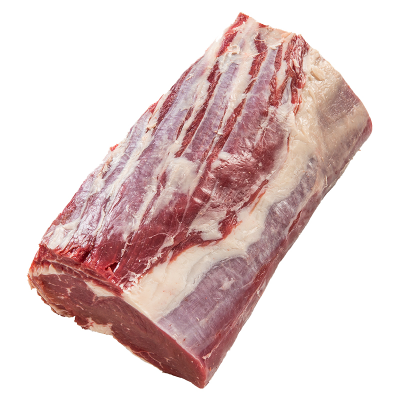What is a Scotch Fillet?
The Scotch fillet, renowned for its tenderness and rich flavour, is a prime-cut beef sourced from the rib section of the cow. What sets it apart is its marbling, offering a perfect balance of lean meat and succulent fat. Understanding different beef cuts is crucial; however, the Scotch fillet stands out for its exceptional tenderness owing to its cut on the cow.

Differentiating Cuts in Beef
Among the myriad of beef cuts, the Scotch fillet is distinct due to its location on the cattle's rib. Its tenderness owes itself to the lack of heavy usage muscles in that area, ensuring a delightful, buttery texture when cooked to perfection.
Origin and History of Scotch Fillet
The origins of Scotch fillet trace back to Scotland, where this premium cut gained prominence for its rich taste and tenderness. Originally part of the Sirloin cut, it emerged as a separate cut appreciated for its exceptional quality and taste.
Nutritional Value of Scotch Fillet
Rich in protein, iron, and B vitamins, Scotch fillet offers a nutritious option for meat lovers. Its moderate fat content contributes to its flavour profile while providing essential nutrients.
Understanding Primal Cuts
Explaining Primal Cuts
Before diving into specifics, it's crucial to comprehend the concept of primal cuts in the realm of beef. Both the Scotch Fillet and Eye Fillet belong to this category, renowned for their exceptional quality.
Scotch Fillet vs Eye Fillet what are the differences
At their core, these cuts share very similar traits. Their high flavour profile and tender texture are attributes that elevate them as top-tier choices for beef enthusiasts.
Differences Between Scotch Fillet and Eye Fillet
Origins and Locations of Cuts
The Scotch Fillet finds its origin in the forequarter of the animal, nestled within the rib section. It's essentially a boneless Rib-Eye steak. In contrast, the Eye Fillet hails from the hindquarter, positioned snugly against the backbone.
Structural Dissimilarities
Structurally distinct, the Eye Fillet appears as a cylinder, while the Scotch Fillet embodies a rib-eye sans the bone. The minimal workload of these muscles contributes to their renowned tenderness.
Taste and Cooking Differences
The taste profiles of these cuts of beef vary subtly, with the Eye Fillet boasting supreme tenderness owing to its minimal workload. However, both cuts promise a delightful culinary experience when cooked to perfection.
Best practices in cooking each cut differ slightly, influencing the flavours and textures they present when served.
Selecting the Best Cut
Quality indicators play a pivotal role in selecting the finest Scotch fillet. Look for marbling, colour, and thickness to ensure a premium cut. Consider factors like aging, grading, and freshness for the best experience.
Factors to Consider When Buying
When purchasing Scotch fillets, consider the source, freshness, and storage conditions. Opt for reputable meat suppliers and inspect the meat's colour and odour to ensure quality.
Cooking Techniques
Traditional methods like grilling and pan-searing enhance the natural flavours of Scotch fillets. Explore modern cooking trends, such as sous vide, for a unique culinary experience.
Pairing and Serving Suggestions
Pair Scotch fillet with robust red wines or earthy flavours for a delightful dining experience. Serve it with roasted vegetables or creamy mashed potatoes to complement its richness.
Comparisons with Other Cuts
Compared to leaner cuts, Scotch fillet offers a balance of flavour and tenderness, making it a preferred choice for various recipes and cooking styles. Read more on the different types of steak cuts.
Nutritional Advantages and Disadvantages
While high in protein and essential nutrients, the fat content in Scotch fillets should be considered for those watching their dietary fat intake.
Buy a Scotch Fillet Now
FAQs
How should I store my Scotch fillet?
- Store the meat in the refrigerator, tightly wrapped in butcher paper or plastic wrap, for up to three days.
What's the ideal cooking temperature?
- For a medium-rare result, aim for an internal temperature of 54°C to 57°C.
How long can I freeze Scotch fillet?
- When properly wrapped, Scotch fillet can be kept in the freezer for up to six months without compromising quality.
Can Scotch fillet be used for slow cooking?
- Yes! It certainly can. Slow-cooking fillet steak is a fantastic method to achieve succulent and tender cuts consistently. Allowing the steak to cook slowly over hours enables the flavours to deeply penetrate the meat, creating an incredibly delicious and appetising meal.
Is Scotch fillet suitable for grilling?
- Absolutely! Grilling enhances the flavours and texture of Scotch fillet, creating a delightful charred exterior while keeping the meat tender and juicy.
Can I marinate Scotch fillets overnight?
- Yes, marinating can infuse additional flavours into the meat, enhancing its taste. However, avoid acidic marinades for extended periods as they can affect the meat's texture.
Are there healthier cooking options for Scotch fillets?
- Opt for grilling, roasting, or broiling Scotch fillet to reduce added fats, ensuring a healthier preparation method without compromising its taste.
Conclusion
Scotch fillet stands as an epitome of flavour, tenderness, and culinary delight. Embrace this premium cut, exploring its rich history, nutritional benefits, and versatile cooking options. Whether for a festive celebration or a cozy meal, Scotch fillet offers an unparalleled dining experience.
 © 2016 University Meat |
© 2016 University Meat |







